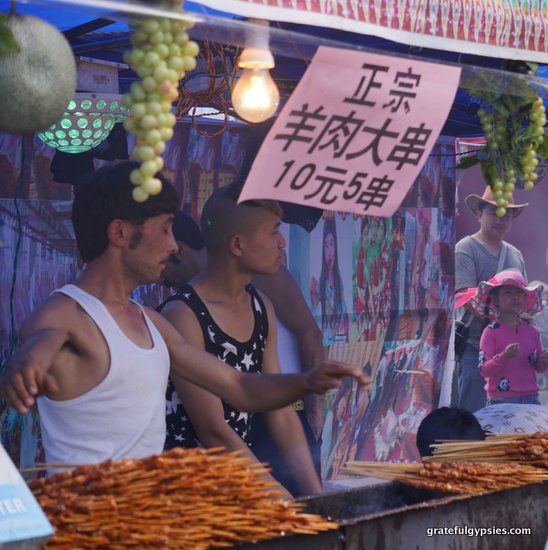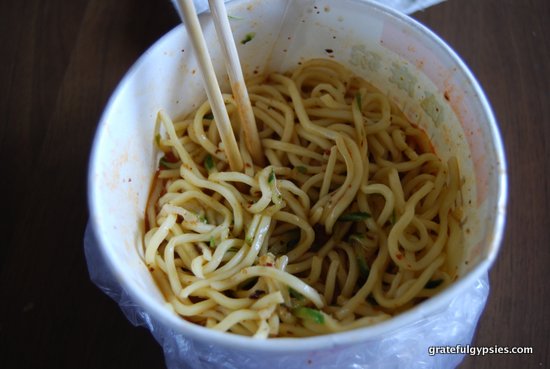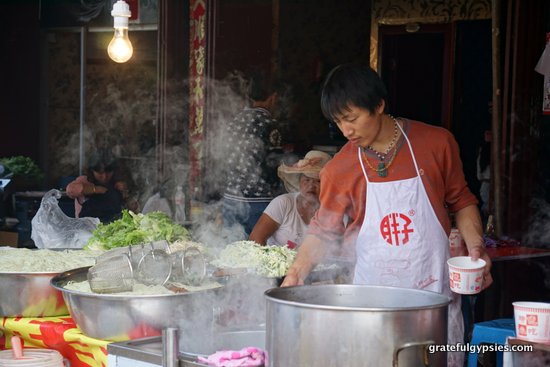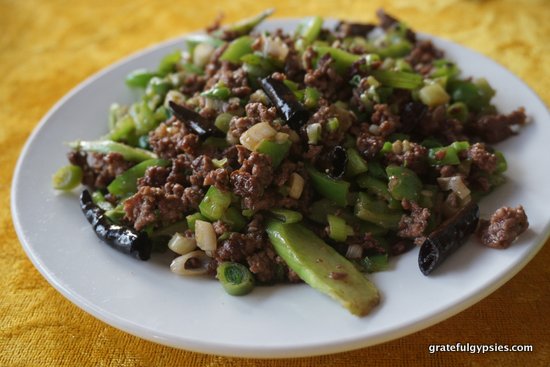We’ve already spent a good amount of time in the Chinese kitchen, learning the words for kitchen appliances as well as dishes, utensils, and more. Now that you’ve got everything you need, it’s time to learn some useful Chinese vocabulary for cooking:

Cooking in China is fun!
Preparation
-
peel (剥 – bō)
-
cut (切 – qiè)
-
slice (切片 – qiē piàn)
-
chop (斩 – zhǎn)
-
mince (剁碎 – duò suì)

拌面 – a cold noodle dish.
Without Heat
-
dressing (拌 – bàn)
-
marinating/pickling (腌 – yān)
-
jellifying (冻 – dòng)

Something yummy’s cooking!
With Heat
-
boil (煮 – zhǔ)
-
steam (蒸 – zhēng)
-
pan-fry (煎 – jiān)
-
stir-fry (炒 – chǎo)
-
deep fry (炸 – zhà)
-
roast (烤 – kǎo)
-
bake (烘 – hōng)
-
bake in foil or paper (焗 – jú)
-
braise (烧 – shāo)
-
smoke (熏 – xūn)
-
scalding (烫 – tàng)

Tasty minced beef cooked up with lots of chili peppers.
Uniquely Chinese Methods
-
red-cooking (红烧 – hóng shāo) or (卤 – lǔ): This method involves cooking over prolonged heat with the ingredients completely immersed in a soy sauce based broth. This style of cooking is commonly used for beef and eggs.
-
gradual simmering/double boil (炖 – dùn): The ingredients are submerged in water in a ceramic casserole, which is then placed in water in a bigger pot to steam for many hours. Delicacies such as bird’s nest soup are cooked in this fashion.
-
high heat stir-fry (爆 – bào): This quick method uses a lot of oil, sauce, or broth to quickly stir-fry the ingredients at very high heat in a wok. It’s meant to deliver a crispy texture without overcooking.
-
stewing (焖 – mèn): This is different from the Western style of stewing – ingredients are stir-fried until partially cooked and then transferred to a clay pot to be slow-cooked. Commonly used for meat and fish.
-
hui (烩 – huì): This is also referred to as braising, but it’s a bit different as it is thickened with a starchy gravy at the end.
However you cook it, Chinese food is one of the world’s most famous cuisines for good reason. Across this vast country, there’s a wide variety in the styles of cooking, the ingredients, and the resulting dishes. For more on Chinese cuisine, check out these past blog posts: China’s Great Culinary Traditions – North, South, East, and West.









Comments:
leeshin:
these Chinese terms are amazing bot all the terms sounds to be the same..now i understood why people are running behind professionals for Chinese translations